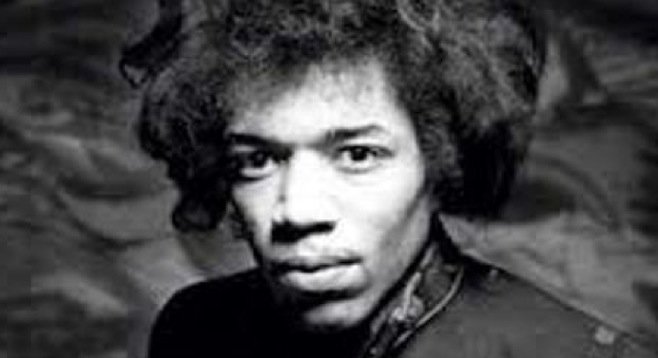 Facebook
Facebook
 X
X
 Instagram
Instagram
 TikTok
TikTok
 Youtube
Youtube

Jimi Hendrix has been dead 43 years – and continues to be represented by a seemingly infinite stream of releases. If his Age of Aquarius idealism has been muddied, he can’t be held accountable for the milking of his artistic corpse. Nor can Hendrix answer the question posed by observers who’ve wondered how much that output has been about a desire to share his dazzling expressiveness and how much it’s about benefiting from the latter.
In any case, People, Hell and Angels will help keep music journalists busy.
Just about any Hendrix passage can impact someone whose playlist has been missing his soulful vocals, casually incendiary guitar work, and stream-of-consciousness compositions. But the process of documenting his creative, post-Experience process would be more intriguing if most of it weren’t already available — especially to diehards and completists — elsewhere.
Still, there’s scorching guitar in a cover of Elmore James’s “Bleeding Heart,” and welcome clarity in the original edition of “Crash Landing.” A funky, sax-spiked “Let Me Move You” inspires a fantasy (granted, Hendrix’ earlier career as a side man included a stint with the Famous Flames): On-fire Hendrix + James Brown. A rather chaotic mess? Probably. But it could have been a fine mess, all the same — perfect gospel accompaniment at the Church of Latter-Day Hendrix.


Jimi Hendrix has been dead 43 years – and continues to be represented by a seemingly infinite stream of releases. If his Age of Aquarius idealism has been muddied, he can’t be held accountable for the milking of his artistic corpse. Nor can Hendrix answer the question posed by observers who’ve wondered how much that output has been about a desire to share his dazzling expressiveness and how much it’s about benefiting from the latter.
In any case, People, Hell and Angels will help keep music journalists busy.
Just about any Hendrix passage can impact someone whose playlist has been missing his soulful vocals, casually incendiary guitar work, and stream-of-consciousness compositions. But the process of documenting his creative, post-Experience process would be more intriguing if most of it weren’t already available — especially to diehards and completists — elsewhere.
Still, there’s scorching guitar in a cover of Elmore James’s “Bleeding Heart,” and welcome clarity in the original edition of “Crash Landing.” A funky, sax-spiked “Let Me Move You” inspires a fantasy (granted, Hendrix’ earlier career as a side man included a stint with the Famous Flames): On-fire Hendrix + James Brown. A rather chaotic mess? Probably. But it could have been a fine mess, all the same — perfect gospel accompaniment at the Church of Latter-Day Hendrix.